Real-Life 'Replicants': 6 Humanoid Robots Used for Space Exploration
Humanoid Space Robots
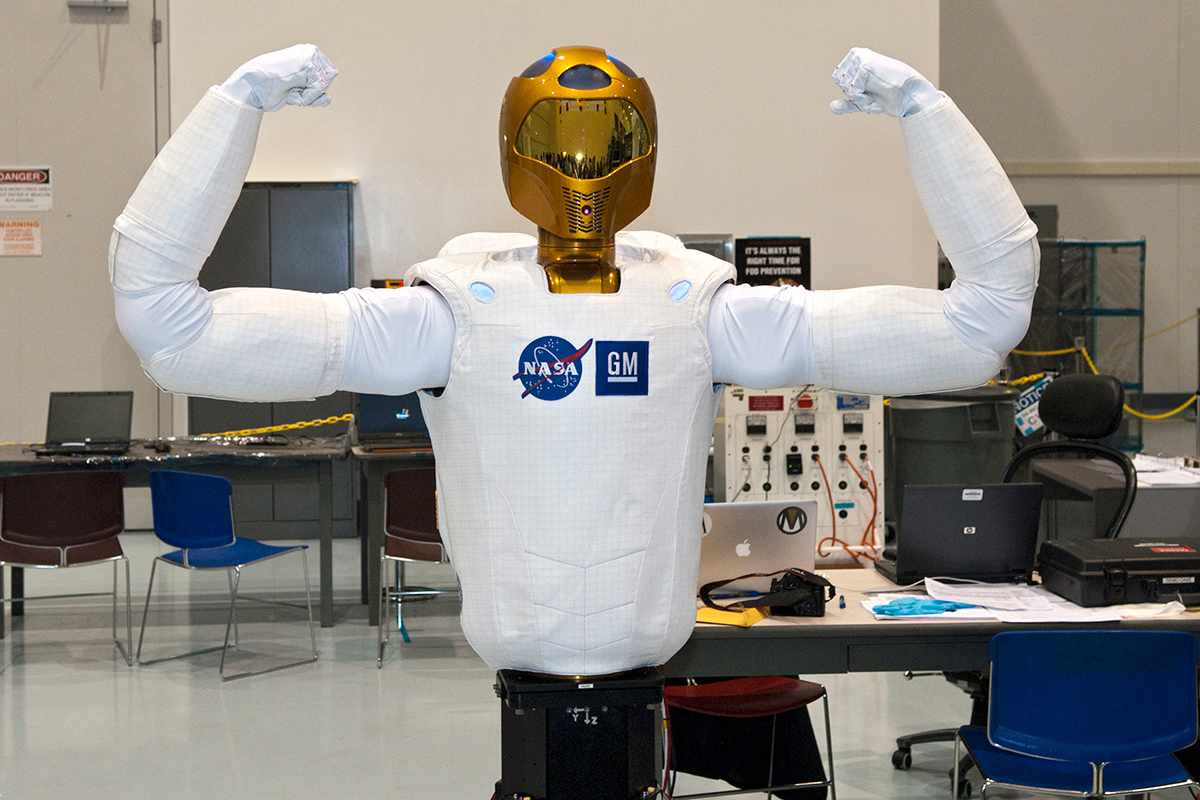
"Blade Runner 2049" features biorobotic androids called "replicants" that closely resemble humans. But the replicants are stronger, faster, and possibly more resilient and intelligent.
Some of these replicants even work in space. In the original "Blade Runner" (1982), a replicant named Roy Batty (Rutger Hauer) briefly talks about his experiences working off of planet Earth. The 1968 Philip K. Dick novel on which the movie was based, "Do Androids Dream of Electric Sheep?", also mentions androids being used for space labor.
While replicants are still far in the future, NASA and other space agencies already use humanoid robots to help do work in space. (Japanese officials hoped to put a humanoid on the moon in 2015, but that hasn't happened yet.) There are many other versions of space robots exploring our solar system — including rovers, satellites and space probes — but here are some examples of the humanoid robots that are doing work in space.
Robonaut (NASA)
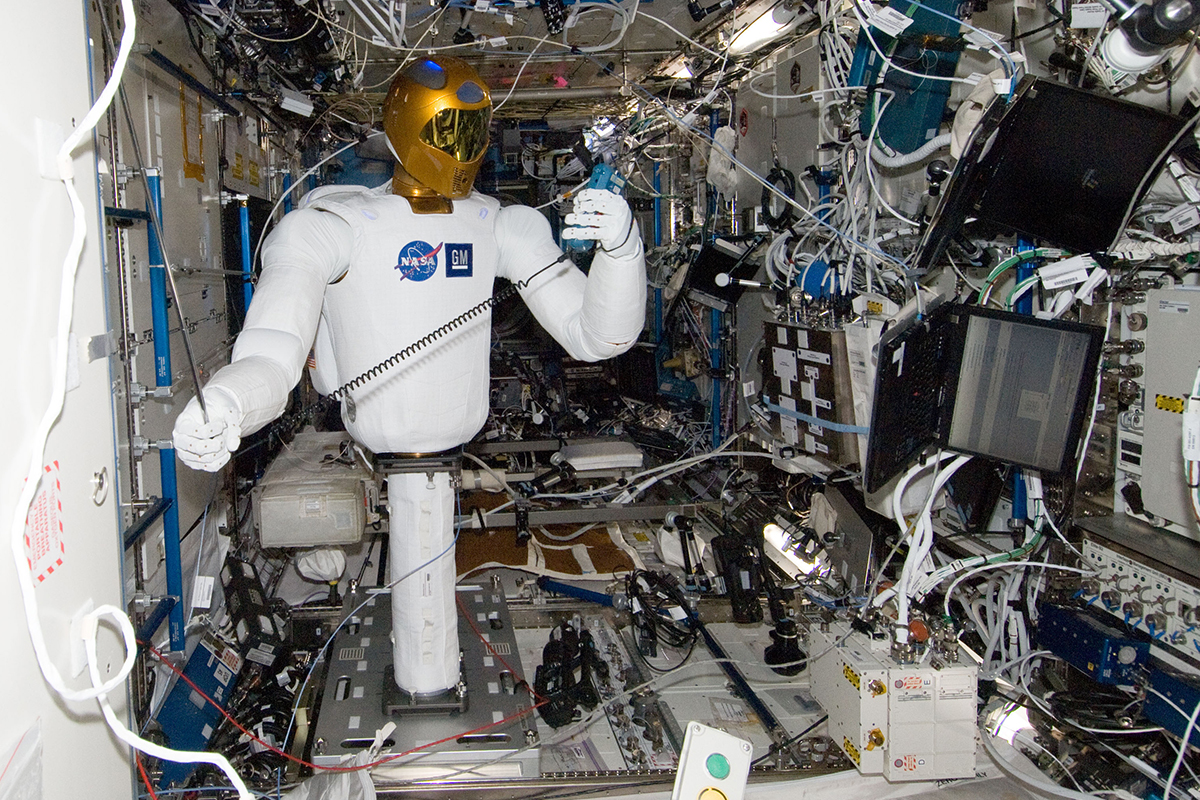
Although Robonaut 1 was never meant to fly in space, NASA tested the technology on the ground before launching its successor, Robonaut 2, in 2011. Robonaut was created in collaboration with the Defense Advanced Research Projects Agency (DARPA), a branch of the U.S. military that invests in far-flung technology projects.
Robonaut 2 has been on the International Space Station since 2011. Its goal is to take over some of the tedious tasks that astronauts do on the station, such as flipping switches and turning levers. It has even tested out telemedicine, clinical health care from a distance via telecommunication. An upgraded version of the robot could also be used for spacewalking in the future.
The Robonaut 2 currently at the space station has special climbing manipulators (legs) to cling on to surfaces, and has been upgraded with better processors and sensors than those on Robonaut 1. While Robonaut 2 undergoes testing in space, ground crews at NASA's Johnson Space Center in Houston are working on another project called the Active Response Gravity Offload System, which is developing a robust robotics research platform for space by working with similar robots on Earth.
Valkyrie (NASA)
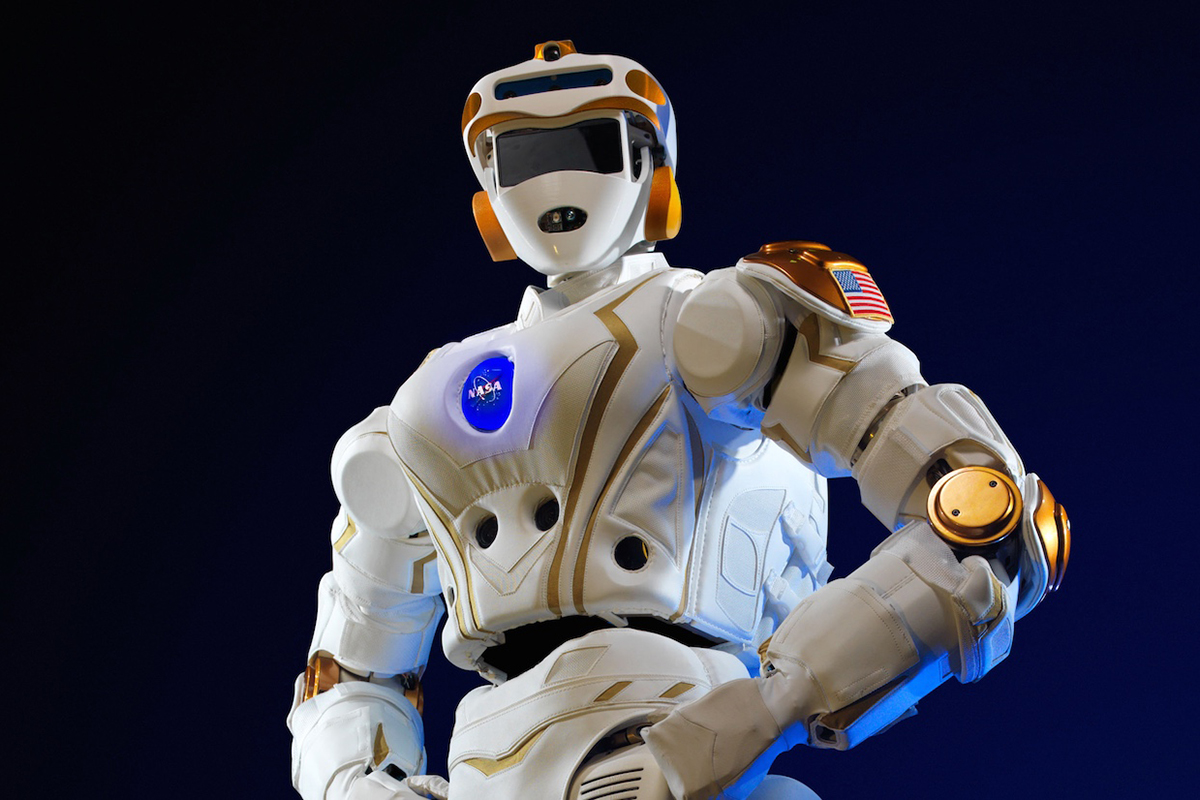
Valkyrie (also known as R5), which was developed in just nine months, was originally a competitor in the DARPA Robotics Challenge in 2011. The robot had to perform functions such as picking up debris, operating a vehicle or cutting through a wall. The initial goal of the project was to assist with disaster response and search-and-rescue operations.
In 2015, NASA to Northeastern University and the Massachusetts Institute of Technology, where collegiate robotics teams would research ways to use the humanoid robots for space exploration.
The robot remains Earth-bound but has shown amazing dexterity and flexibility. In 2015, Valkyrie was filmed dancing to techno music. Its "moves" included standing on one foot while leaning in different directions, and moving from foot to foot. Its technology could be used for missions to Mars someday. [NASA's Valkyrie R5 Space Robot in Pictures]
RoboSimian (NASA's Jet Propulsion Laboratory)
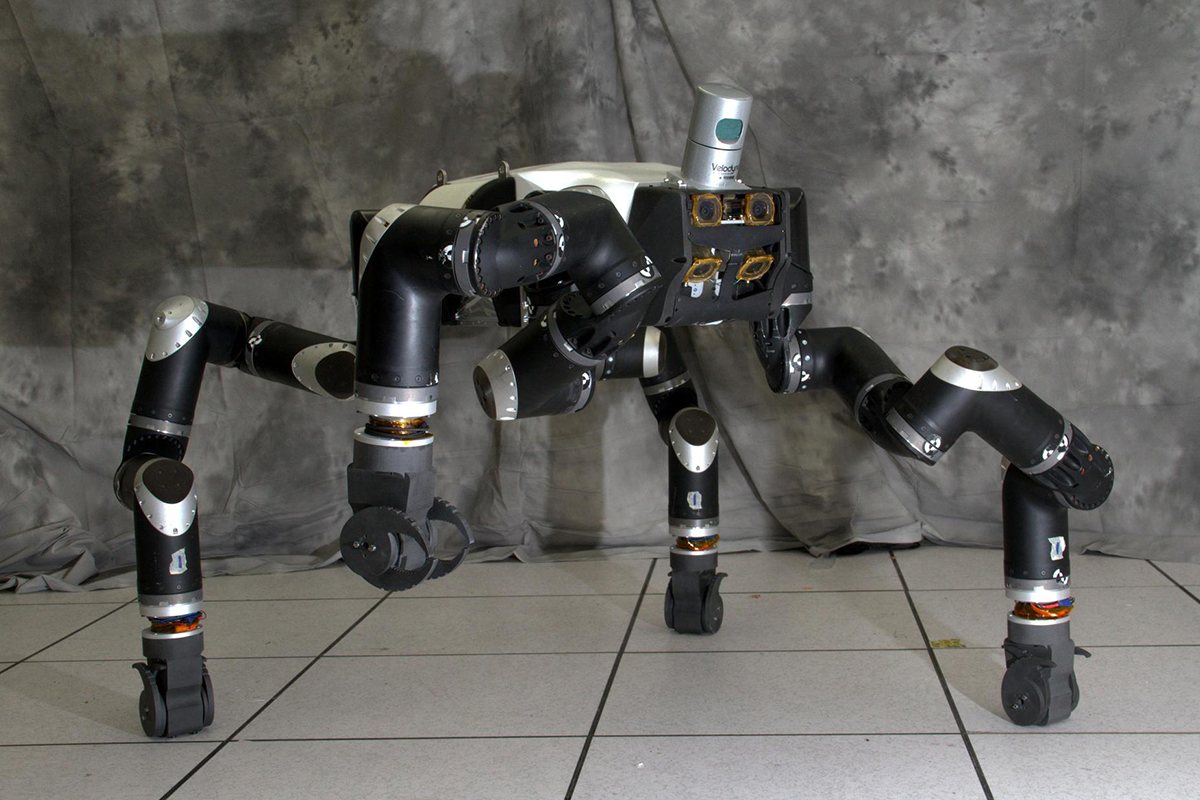
RoboSimian is more like an ape than a human, but however you classify it, it's a powerful machine. The robot can map its environment in 3D using lidar technology. It's extremely flexible, and can go over tough terrain and undertake tasks that require dexterity. RoboSimian competed in the finals of the DARPA Robotics Challenge in 2015.
RoboSimian's extreme dexterity could also be useful in disaster recovery efforts, NASA said at the time. With four limbs, the robot can support itself easily on uneven surfaces and climb on ladders, stair treads or railings. The robot's ability to see in 3D, coupled with its enhanced mobility, reduces its risk of falling over — a common problem for two-legged robots. [NASA JPL's RoboSimian Robot in Images]
Kirobo (Japan Aerospace Exploration Agency)
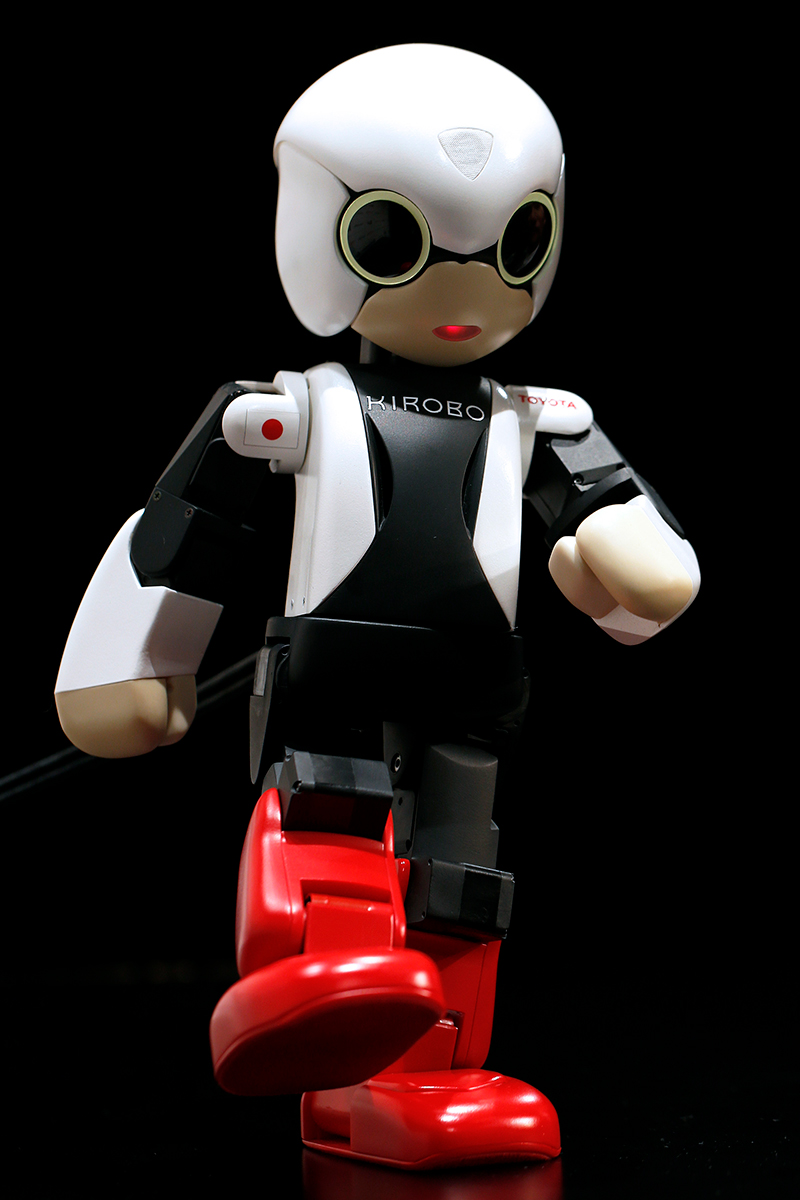
apan's Kirobo was an adorable mini-astronaut robot that launched to the International Space Station in 2013 aboard the HTV-4 cargo ship. Standing only 13 inches (34 centimeters) tall, the robot was used to test human-robot interaction in space as a part of the Kibo Robot Project.
On Dec. 6, 2013, Kirobo carried on its first conversation in space, with Japanese astronaut Koichi Wakata. The robot speaks only Japanese.
Kirobo and its Earth-bound twin, Mirata, were built at the University of Tokyo's Research Center for Advanced Science and Technology. In addition to talking, they could recognize voices, faces and emotions. [Photos: Meet Kirobo, Japan's 1st Talking Space Robot]
Dextre (Canadian Space Agency)

Admittedly, Dextre doesn't really look all that human – it's a little gangly with limbs bent at odd angles. But the robot does a lot of valuable work on the exterior of the International Space Station. The two-armed robot is also known as the Special Purpose Dexterous Manipulator.
Since its launch in 2008, Dextre has participated in robotic satellite refueling tests, which could help extend the lifespan of satellites in the future. The robot is also "on call" for routine maintenance on the orbiting complex, such as replacing cameras or batteries, according to the Canadian Space Agency.
The long-term goal of Dextre is to reduce the need for astronauts to do spacewalks, which are some of the riskiest activities astronauts undertake. Having Dextre on board also reduces the time astronauts spend on repairs, since operators on the ground can control it remotely.
AILA (German Research Center for Artificial Intelligence)

Germany's Aila robot is intended to improve artificial intelligence in space. Controllers can move Aila using a custom mouse or Microsoft Kinect technology (which was used for the Xbox 360 and Xbox One video game consoles.)
The robot can mimic human motions by recording what humans do, analyzing the movements in small segments and then building upon the library of information to make new moves. This type of learning might be useful for future robotic work inside and outside the space station, on the moon and even on Mars.
Aila was unveiled in 2010 and has received funding through multiple projects since then. The German Research Center for Artificial Intelligence maintains a page about Aila on its website.
Join our Space Forums to keep talking space on the latest missions, night sky and more! And if you have a news tip, correction or comment, let us know at: community@space.com.
Get the Space.com Newsletter
Breaking space news, the latest updates on rocket launches, skywatching events and more!

Elizabeth Howell (she/her), Ph.D., was a staff writer in the spaceflight channel between 2022 and 2024 specializing in Canadian space news. She was contributing writer for Space.com for 10 years from 2012 to 2024. Elizabeth's reporting includes multiple exclusives with the White House, leading world coverage about a lost-and-found space tomato on the International Space Station, witnessing five human spaceflight launches on two continents, flying parabolic, working inside a spacesuit, and participating in a simulated Mars mission. Her latest book, "Why Am I Taller?" (ECW Press, 2022) is co-written with astronaut Dave Williams.
